|
You’re prepared to photograph wildlife (See last week’s post Wildlife Photography – 6 Degrees Of Preparation for more on getting ready). So where do you find them? 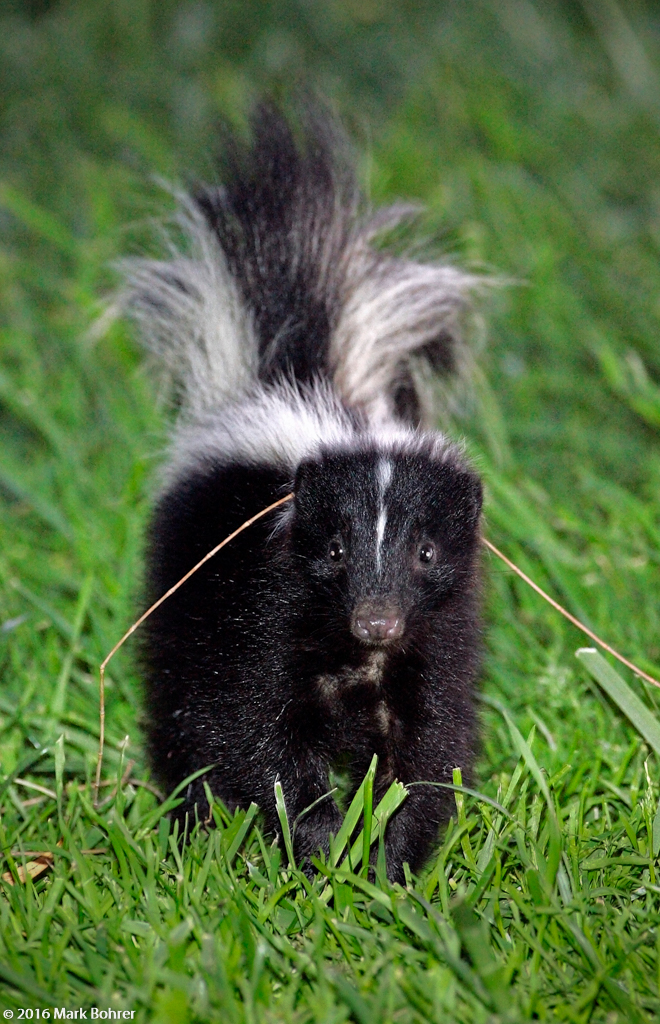 Striped skunk surprise, Shoreline at Mountain View, California  Long Lens and Workshop Beginnings When I started photographing wildlife in 2003, I knew I needed a long lens, but not much else. So I went to a Moose Peterson workshop on wildlife photography as a business. When I got there with my original EOS 1D, 400mm f/4 DO IS lens and 1.4X teleconverter, Moose told me I needed a heavier tripod with a gimbal head, and likely a longer lens. He also had good shooting tips – the right way to use food lures, and not overpowering the bird with a big perch. After many years of practice, published photo articles, and private print sales, I developed my own way of shooting wild mammals and birds. Find A Native Guide First, find a native guide. I know, you just want to find wildlife, but there’s always someone who knows wildlife habits at your dream destination much better than you do. I began with workshops from Moose to find out where to go in California’s eastern Sierras and the Tetons in Wyoming. Then I researched online for more locations. I discovered California’s Shoreline at Mountain View and Palo Alto Baylands Nature Preserve right in my backyard. Rangers at both parks told me about the best spots for avocets, stilts and other water birds. And they tipped me about an active hummingbird nest. 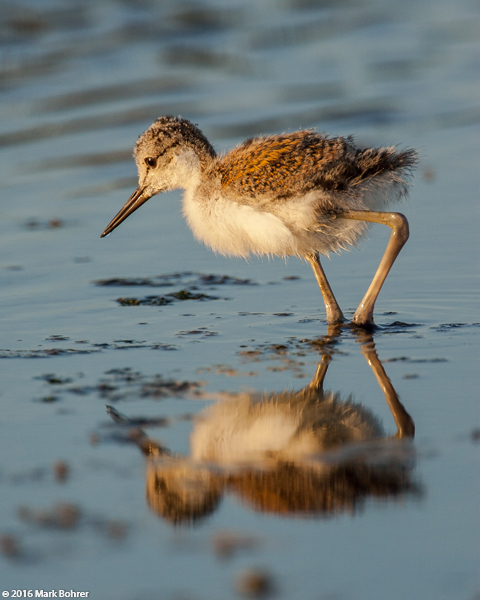 Juvenile black-necked stilt, Palo Alto Baylands, California I found Arthur Morris’ info on winter bird photography at Bosque del Apache in New Mexico, and got the best times to be there for sandhill cranes and snow goose mass liftoff. 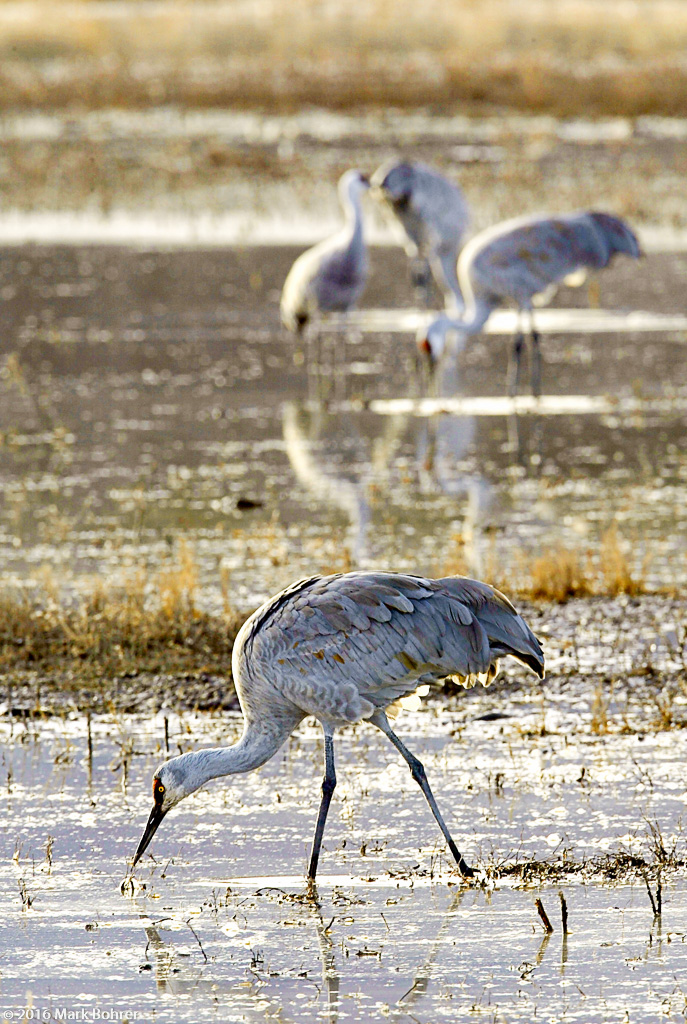 Sandhill cranes, Bosque del Apache I also found references to bison and pronghorn on Great Salt Lake’s Antelope Island, and winter elk feeding at Utah’s Hardware Ranch Wildlife Management Area. Talking with wildlife managers there got me a ride on the hay wagon as staff threw hay down for elk, and told me that feeding kept the animals from munching backyards in their traditional wintering grounds near Ogden. 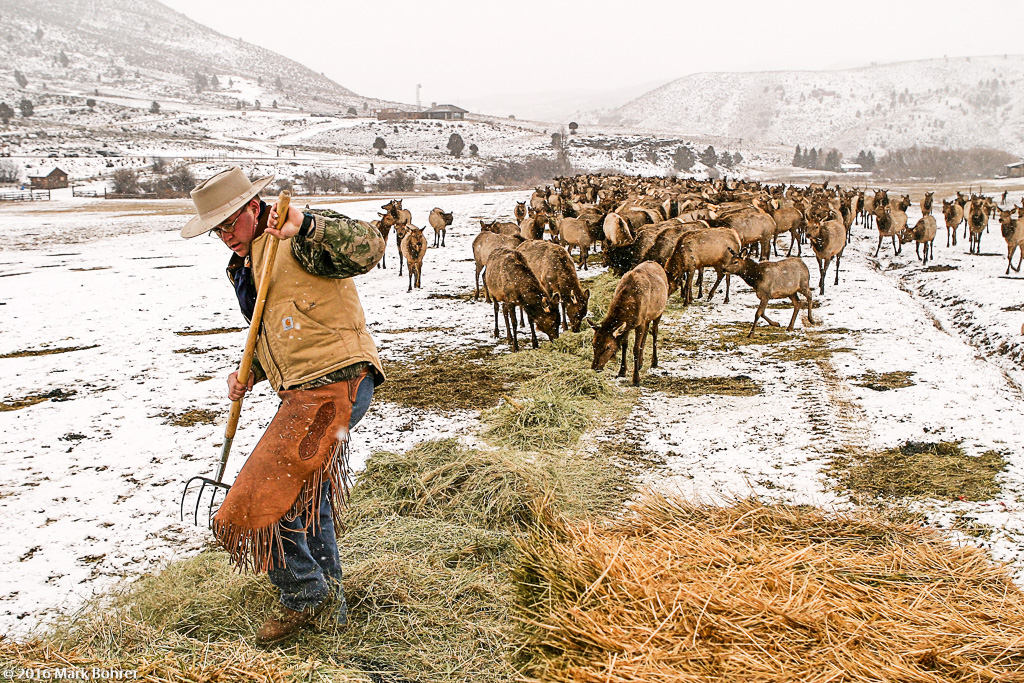 Winter elk feeding, Hardware Ranch WMA, Blacksmith Fork Canyon, Utah And a conversation with wait staff at Evil Dave’s Grill in Jasper, AB gave useful tips for where to find wildlife in the park.  Grizzly, Jasper National Park, Alberta You may need more than one visit – more are better. I made repeated trips in different seasons to favorite spots in Shoreline and the Baylands, and came away with shots showing seasonal plumage differences, different behavior, and nesting habits. I also discovered better spots to photograph from. 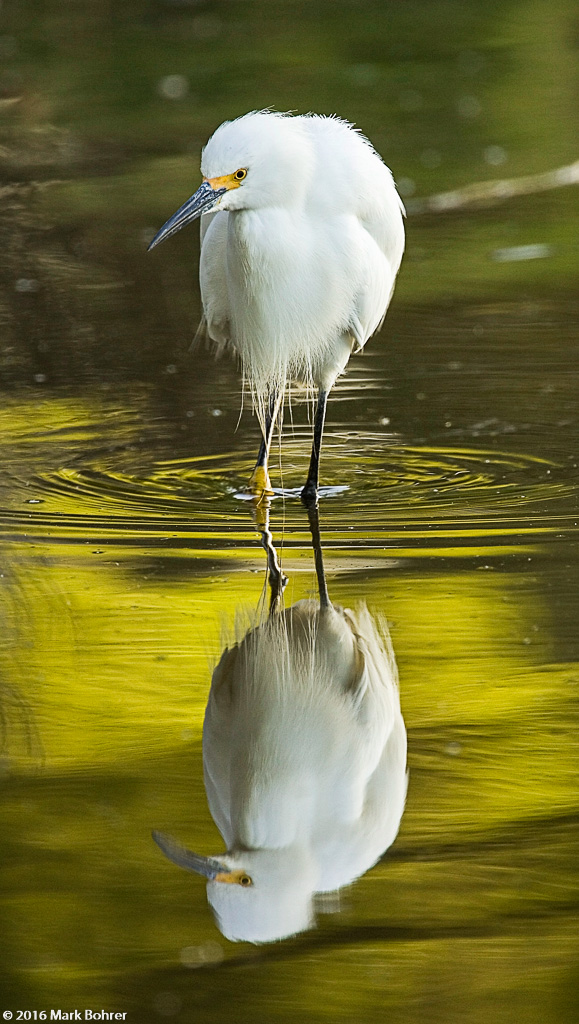 Snowy egret, Shoreline at Mountain View, California But if you’re not living nearby, a native guide’s help will be invaluable alongside your own research. Food And Water Along The Edges Second, food and fresh water are the best motivators. In a wetland, water is everywhere. You’ll want to find a spot with trees and other cover for birds, one you can get close to without going thigh-deep in unexpected mud. Also, find nearby small mammal burrows. This gets you shots of paririe dogs and ground squirrels, but may also get you pictures of their predators – golden eagles, red-tailed hawks, owls, coyotes. 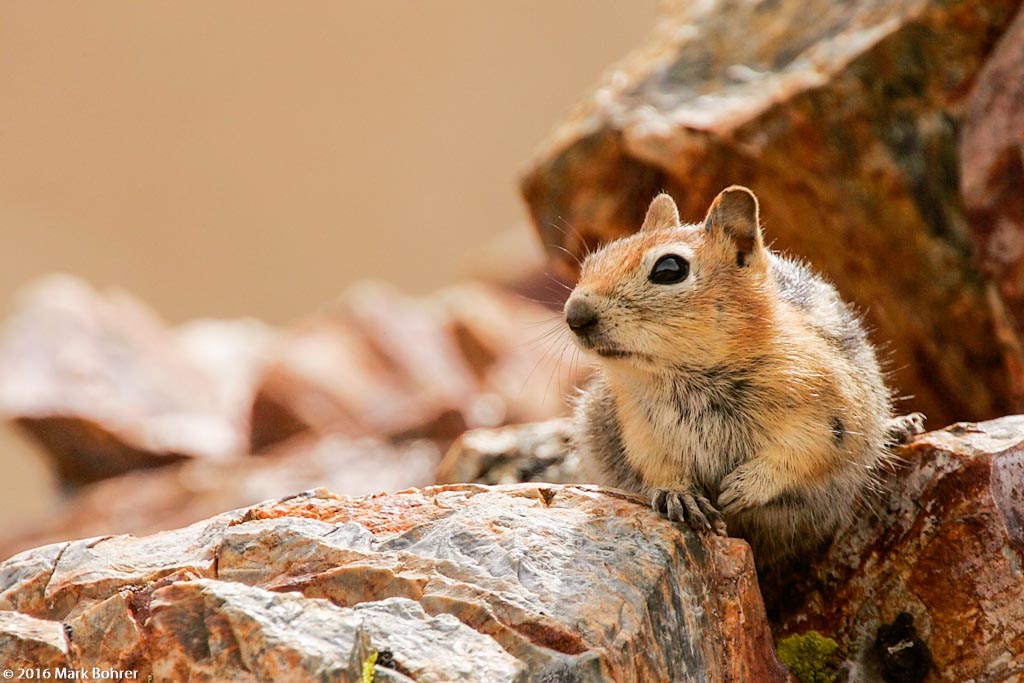 Golden-mantled ground squirrel, Mono Pass Trail, Yosemite National Park Dechambeau Ponds near undrinkably-salty Mono Lake host yellow-headed blackbirds squawking for mates. And osprey will nest on inaccessible Mono Lake tufa towers to keep their nestlings safe from predators, but fly to nearby June Lake to hunt for fish. I’ve also photographed a huge variety of small perching birds feasting on freshly-hatched alkali flies among shoreline tufa. 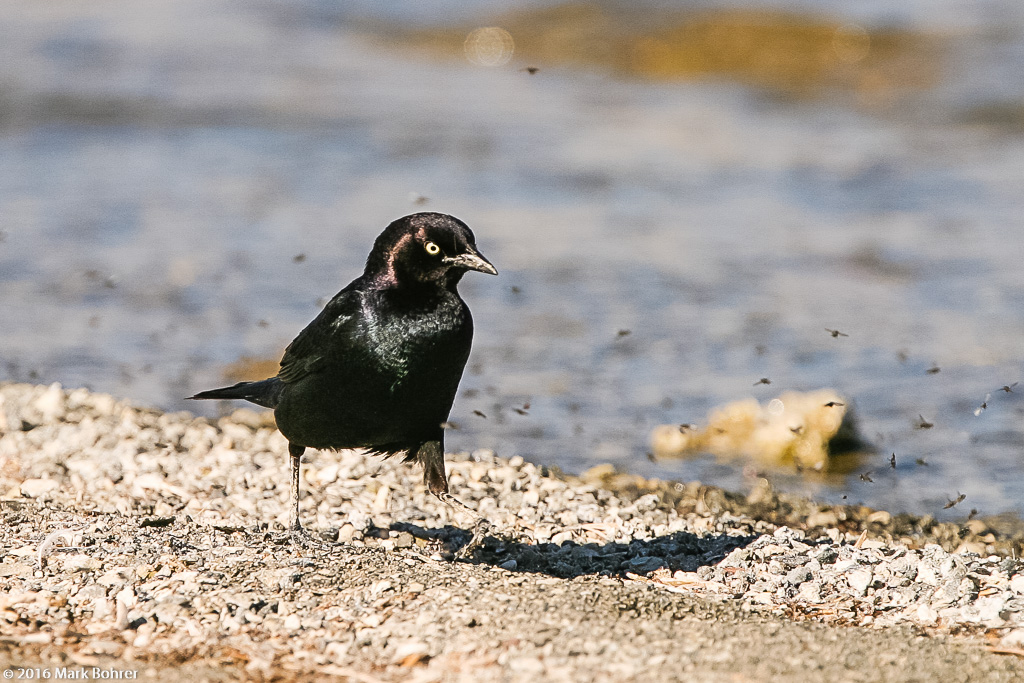 Hunting alkalai flies – Brewer’s blackbird, Mono Lake South Tufa, California Find the edges – wetlands, riparian stream banks, and lake shorelines all have their share of wildlife moving through or stopping to drink or hunt. Look for raptor nests on top of power poles – bald eagles and osprey are just two species I’ve photographed on power pole nests at lakeshores. 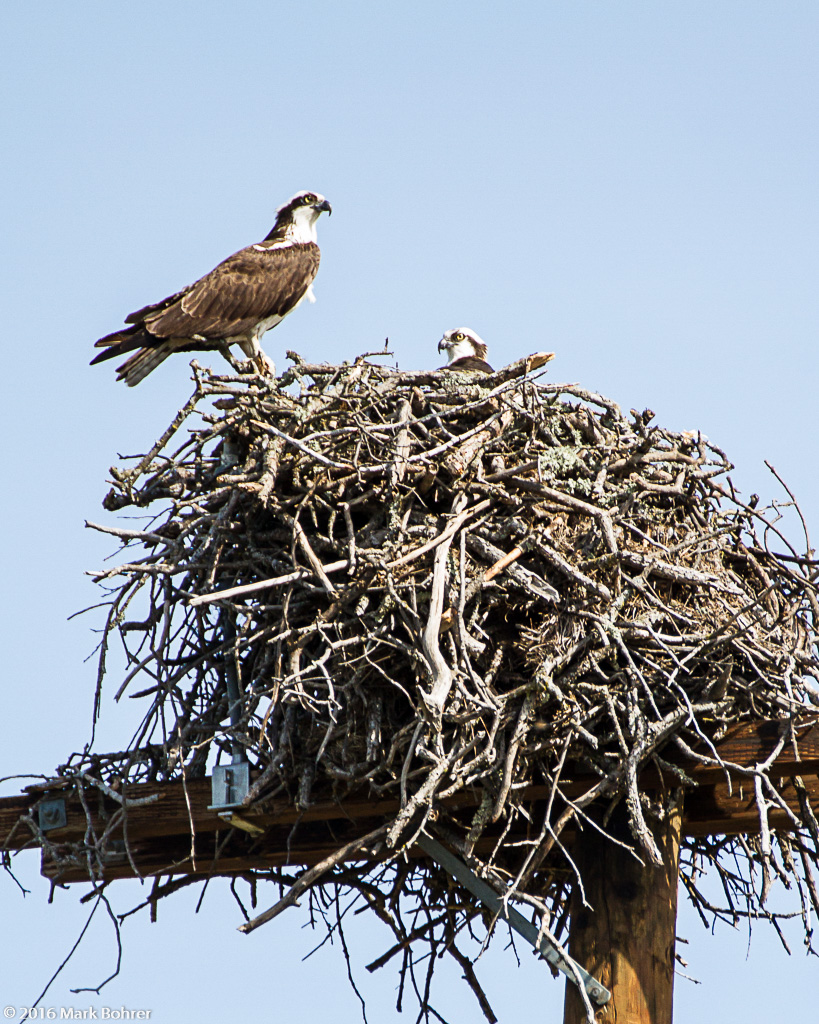 Osprey nest, New Melones Reservoir, Santa Clara County, California Frontcountry and backcountry trails provide an easy way in not just for humans, but also for wildlife. I’ve been forced off Glacier National Park’s Highline Trail by mountain goats, and found loudly-munching bighorn sheep just off the trail. Why Chasing Wildlife Doesn’t Work OK, so what about chasing wildlife you find on the move? First off, the weight and bulk of a long lens on any dSLR and tripod won’t really let you do this. Instead, research and talk to native guides first, and set up in a likely spot. Then be patient. I watched a striped skunk hunt along the same route every night at Shoreline. One night I was ready and waiting for him with 500mm lens on tripod, and a flash with Better Beamer focuser for fill. His surprised look was priceless. When I’ve tried to follow wildlife targets of opportunity, I end up with lots of fleeing wildlife butt shots and pictures of empty, birdless perches. So I don’t bother anymore. I’ll have more on composition and time of day in Part II. |
(408) 483-3782
Curious about how to shoot ruins?(408) 483-3782

Recent Comments